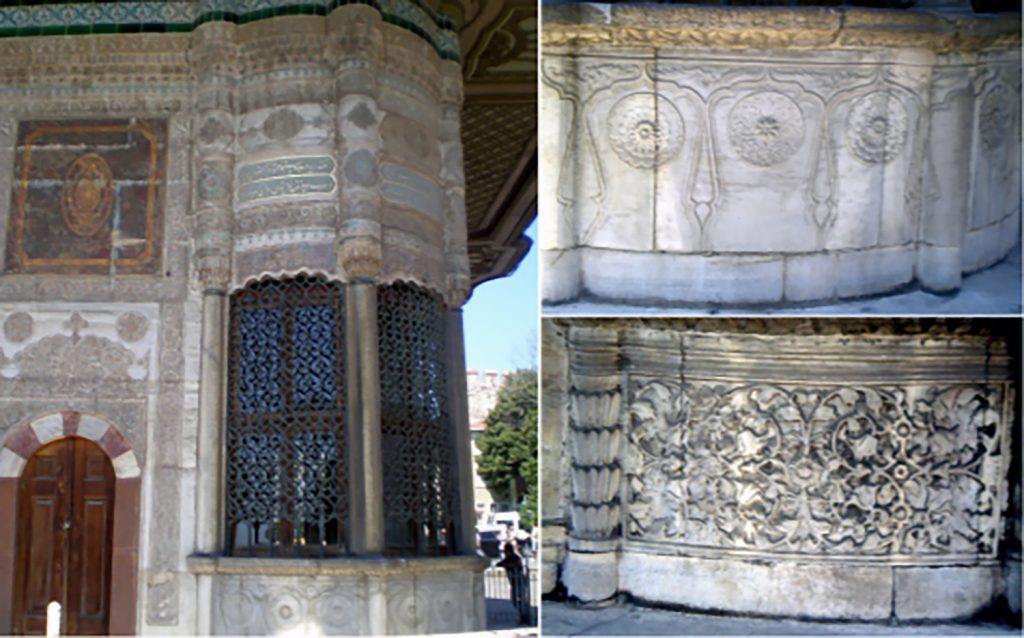AN EXAMPLE OF OTTOMAN CIVIL ARCHITECTURE: THE FOUNTAIN OF AHMED III
An Example of Ottoman Civil Architecture: The fountain of Ahmed III, our digital exhibition named the fountain of Ahmed III, represents one of the most important examples of Ottoman civil architecture. The fountain of Ahmed III was built on the site of an old Byzantine fountain called Perayton. [1] The Fountain was built during the Tulip Era and still remains one of our most important examples of civil architecture.
The Tulip Era started with the 1718 Treaty of Pasarofca and ended with the 1730 Patrona Halil Rebellion. The sultan of the period was Ahmed III and the grand vizier was Damat İbrahim Pasha from Nevşehir. The Tulip Era is known as the age of pleasure. It took its name stems from the tulip, the flower that grew in Istanbul at that time and spread all over the world over time. Ottomans did not call this period by this name; the term “Tulip Era” began to be used much later. The Tulip Era was a period in which distinguished personalities grew up in almost every field of art such as fine arts, especially architecture, literature, and music. The sultan of the period Ahmed III, was himself a musician and calligrapher.

The fountain was one of the most beautiful examples of not only the Tulip Era but also the entire Ottoman architecture. The inscription on the fountain indicates that it was built between 1728 and 1729 upon the order of Sultan Ahmed III, who followed the Grand Vizier Nevşehirli Damat İbrahim Pasha’s suggestion. The fountain is located right in front of Bab-ı Hümayun Gate, which is the entrance of Topkapı Palace. In many sources, the architect of the work is mentioned as the Chief Architect Mehmet Ağa from Kayseri.
Different sources demonstrate that Ahmed III personally drew the plan of the fountain, and the Chief Architect Mehmed Ağa implemented this plan as he undertook the construction.[2]
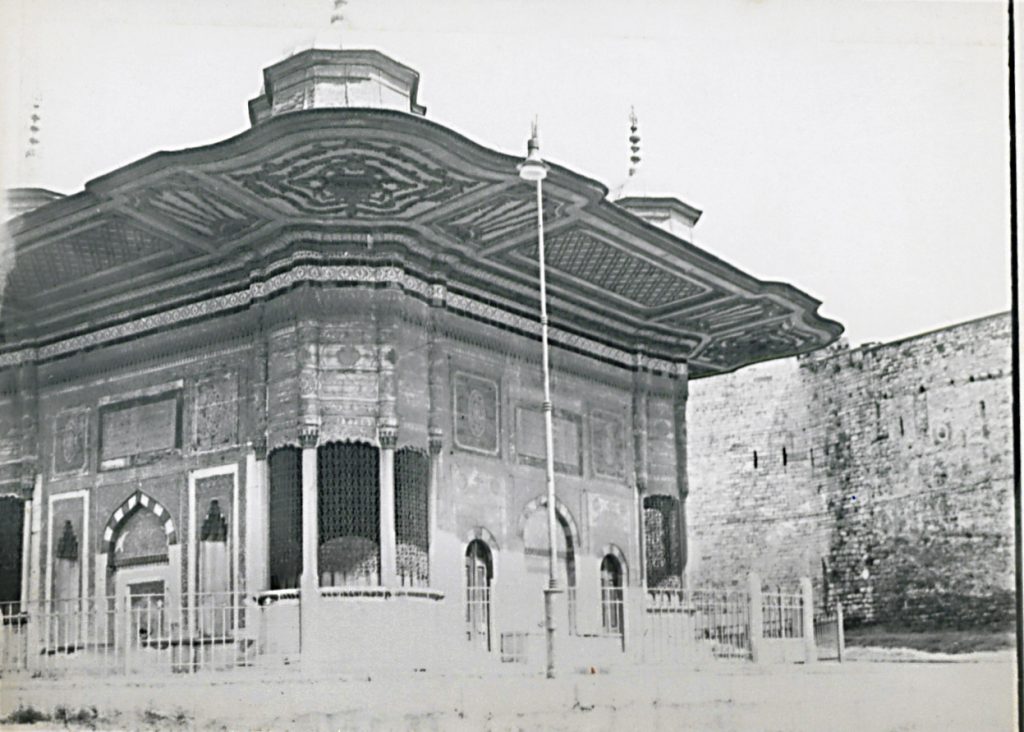
With the influence of the Tulip Era, the Western influence began to appear in the Ottoman art during the 18th century, and The Fountain was built with a very ornate and magnificent architectural structure. The fountain resembles a monumental mansion with its 5 domes on the lead-coated roof. [3]
The famous eulogy of the Tulip Era’s famous Divan Poet Seyyid Vehbi, consisting of 28 couplets, is embroidered on the fountain, which shows that it is an important work of art for Ottoman civil architecture.
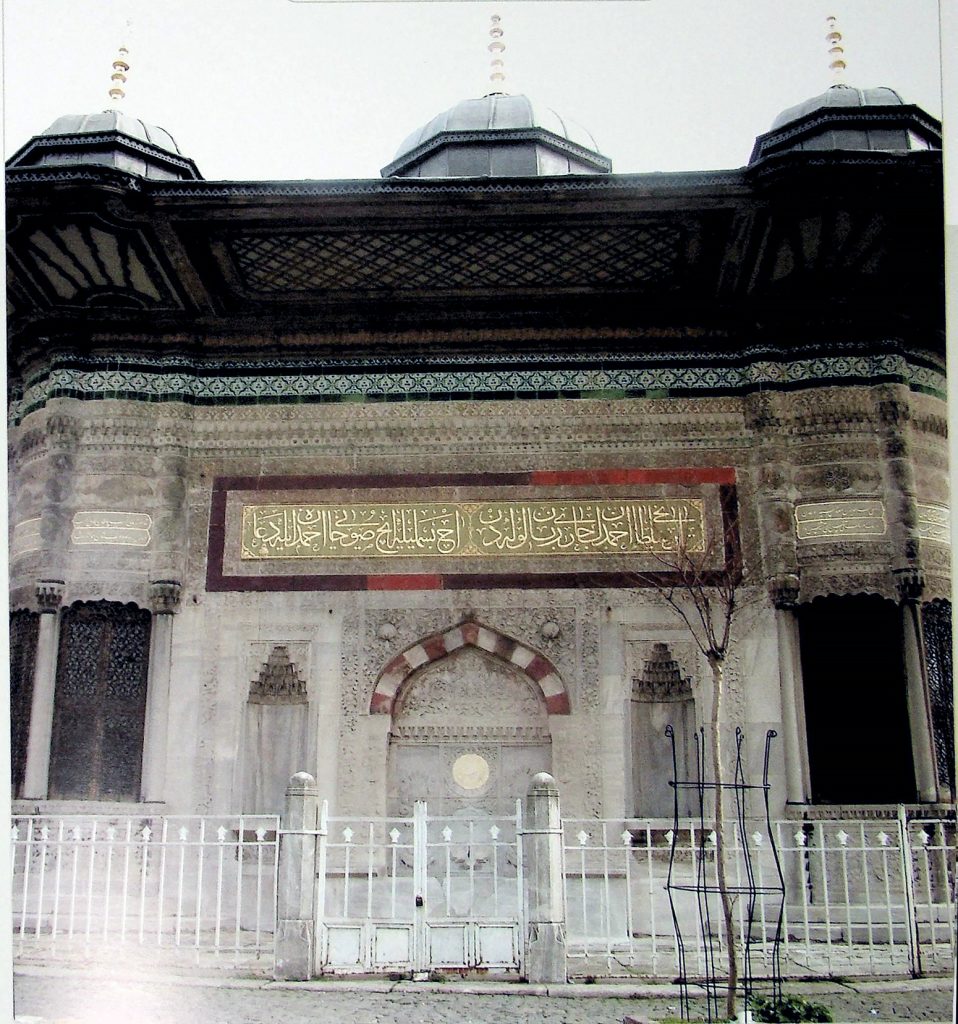
Five couplets were engraved on the red-framed and green-ground plates on the fountain mirrors, and three couplets were engraved on the fountains. The couplet on the front of the fountain, facing the Blue Mosque, was written in the sultan’s own calligraphy.
Târihî Sultan Ahmed’in cârî zebân-ı lüleden
Aç besmeleyle iç suyu Han Ahmed’e eyle duâ
Regarding this work, Italian literary writer Edmonde de Amicis; “There is no place left where the human hand has not carved. It is the wonder of grace, patience and wealth. Undoubtedly, it is worthy of protection under a crystal lantern. Who knows how this unique diamond would shine on the first day. Seeing him once is enough to keep your dream from being erased from your memory until you die.” says.
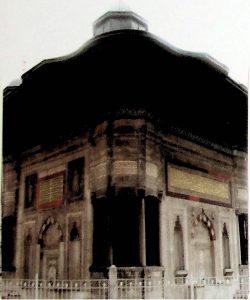
Classical style and some baroque features were used together in the fountain. There is a wide eaved roof above the fountain, a high dome in the middle and small domes with high rims. There are ornate reliefs under the eaves. The eaves of the roof are decorated with reliefs of fruits such as pomegranates, pears and grapes. There is a tile belt and a muqarnas belt on the fountain. These belts show that the fountain is in both classical and western-style.
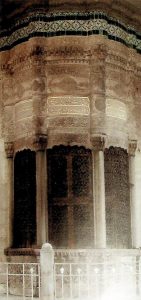
Under the eaves, there is a tile border decorated with leopard spot and tiger stripe motifs surrounding the fountain, and a border with palmette ornaments and muqarnas. At the corners of the building, there are four cylindrical columns with stalactite column heads that animate the architecture, and there are semi-circular fountain sections divided into three sections.
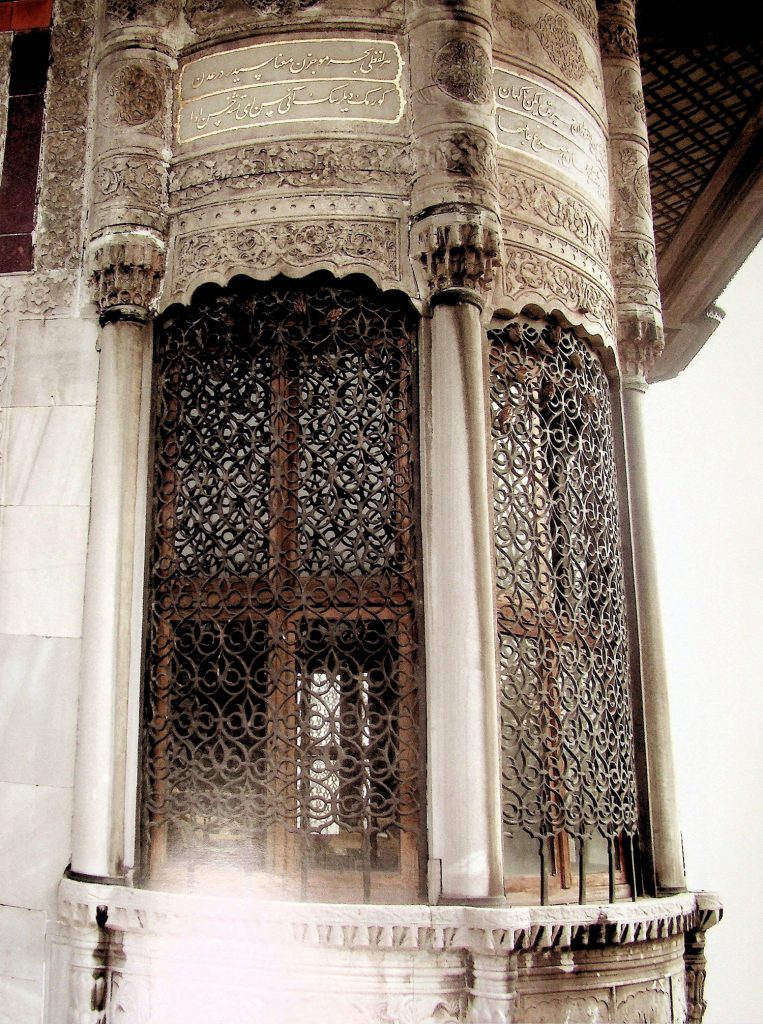
Dazzling with its abundant floral decorations and baroque style, the fountain is made of white marble.

Each chapter has a two-line inscription. There are networks of stylized tulip motifs on the windows shaped with wavy arches. There are two steps in front of the fountains and a small dome on each. [4]
Bak sîm ü zerden tâsına âb-ı hayât-efzâsına
Benzer gümüş sakâsına bekler kapun subh u mesâ
Yapdın sarây meydânına kıldın salâ atşânına
Cennet’de Kevser yanına gûyâ ki kasr itdin binâ
Altun suyun idüp sebîl yapdın uyûn u sebsebîl
Birine bin ecr-i cezîl versün Cenâb-ı Kibriyâ
Medhinde hâmem oldu lâl ızhâr-ı acz itdi makâl
Evsâfın eylerken hayâl hâtifden irdi bu nîda
Vehbî hamûş ol beste-leb haddin değil eyle edeb
Senden mukaddem oldu hep şâirlere birden salâ

There are fountains on all four sides of the building. There are niches with muqarnas resembling a mihrab on both sides of the white and red pointed arched fountains on the main façade.
The fountain, which looks like a gilded jewelery box with its decorations, reliefs and inscriptions, has survived to the present day. The construction of the fountain was not fully completed when Sultan Ahmed III was deposed during the Patrona Halil Rebellion.
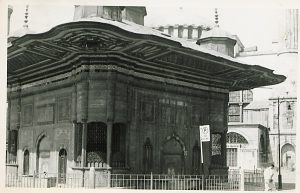
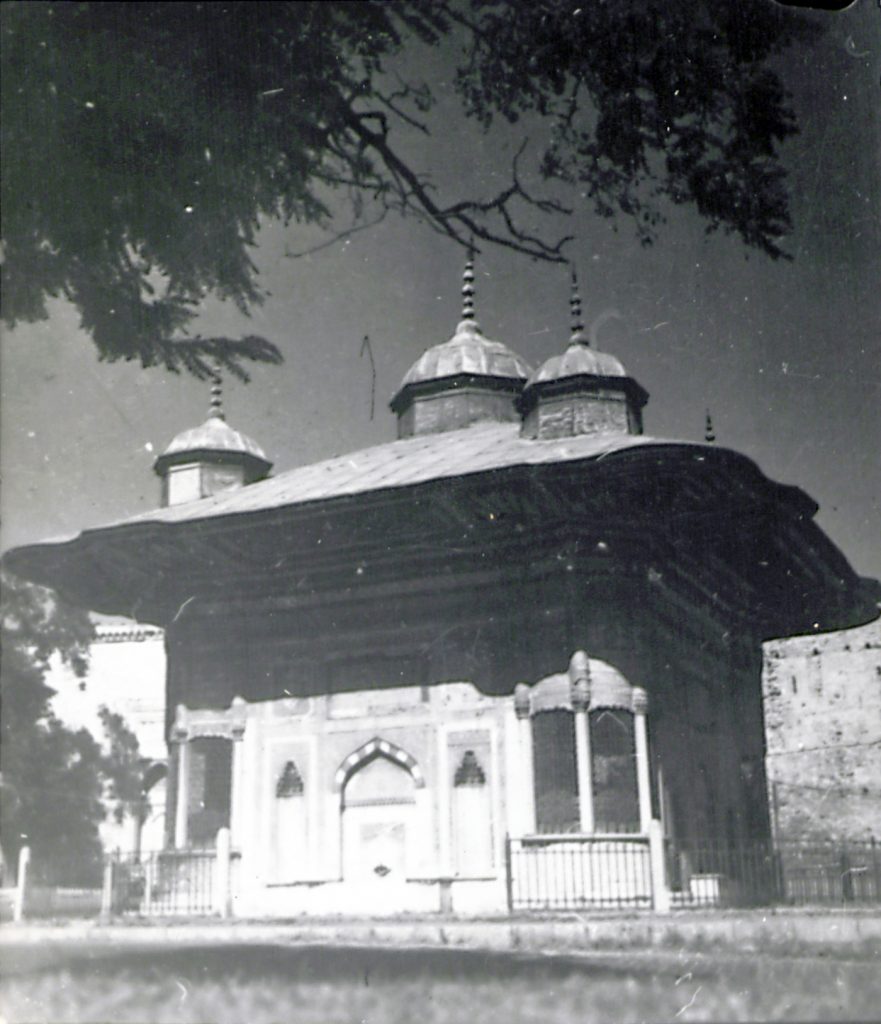
Our digital exhibition, titled An Example of Ottoman Civil Architecture: The Fountain of Ahmed III, was created with the selected archival materials and visuals from the digital collections of the Koç University Suna Kıraç Library.
References:
[1] ÖDEKAN, Ayla, “Ahmed III. Meydan Çeşmesi”, İstanbul Ansiklopedisi, vol. I., İstanbul, 1995, pp.116-117.
[2] “İstanbul Tarihi Çeşmeler Külliyatı” ed. Yrd. Doç. Dr. Necdet Ertuğ (İstanbul: İstanbul Su ve Kanalizasyon İdaresi Yayınları, 2006, vol. 1, 241-248.
[3] Türkiye Diyanet Vakfı. “İslam Ansiklopedisi” Access: 31.01.2022, https://islamansiklopedisi.org.tr/ahmed-iii-cesmesi–topkapi-sarayi.
[4] “İstanbul Tarihi Çeşmeler Külliyatı” ed. Yrd. Doç. Dr. Necdet Ertuğ (İstanbul: İstanbul Su ve Kanalizasyon İdaresi Yayınları, 2006, vol. 1, 246.
[5] Koçyiğit, Filiz, “Osmanlı Mimarisinde Meydan Çeşmeleri”, Akdeniz Sanat Dergisi, 13, 2019, pp. 345-346.

